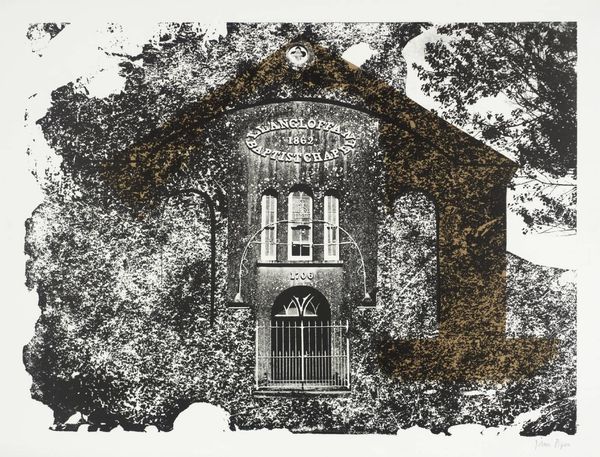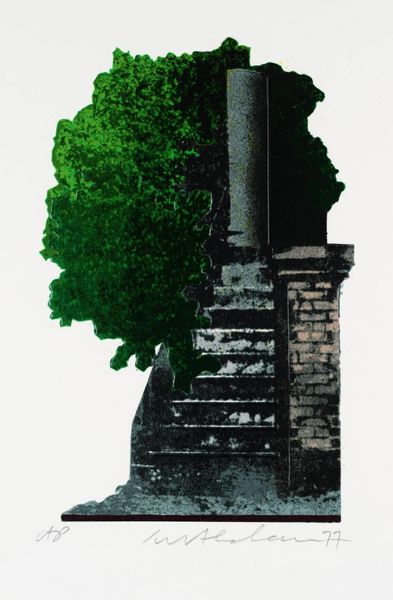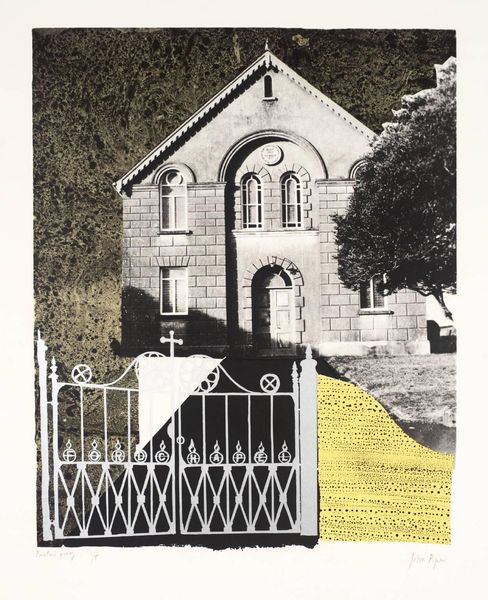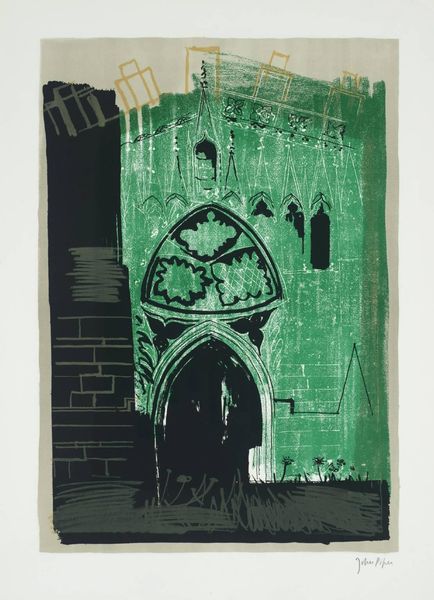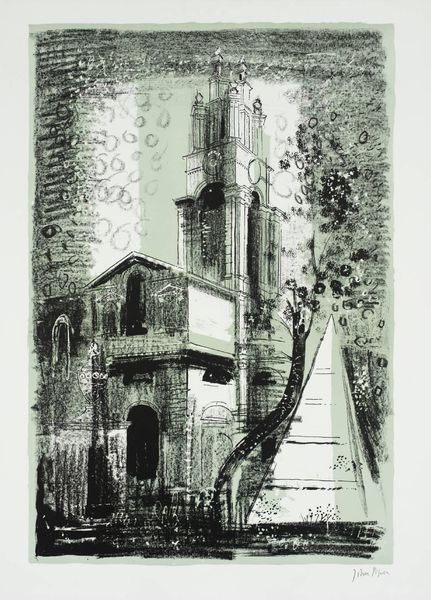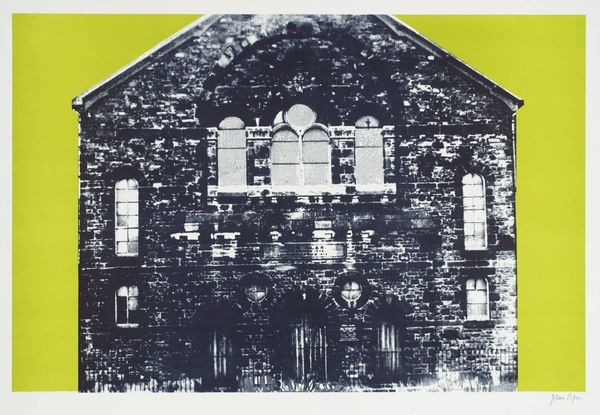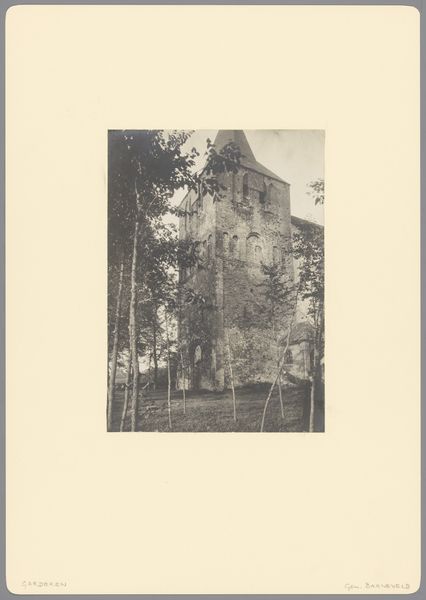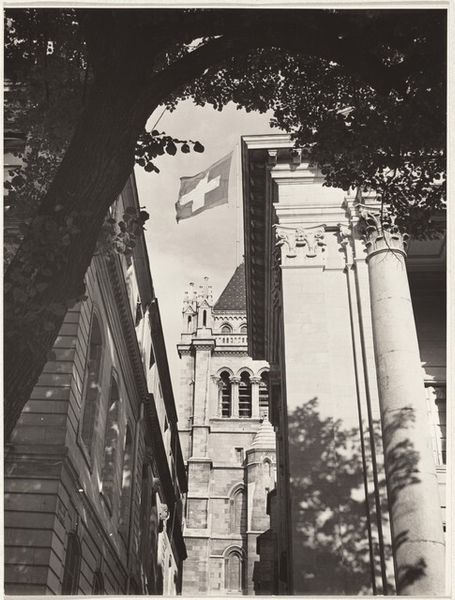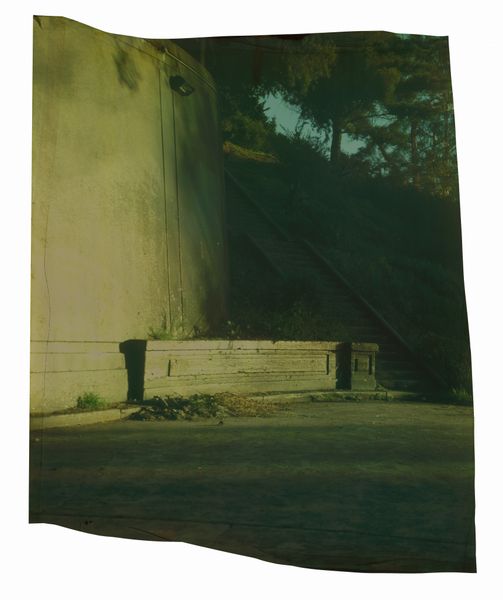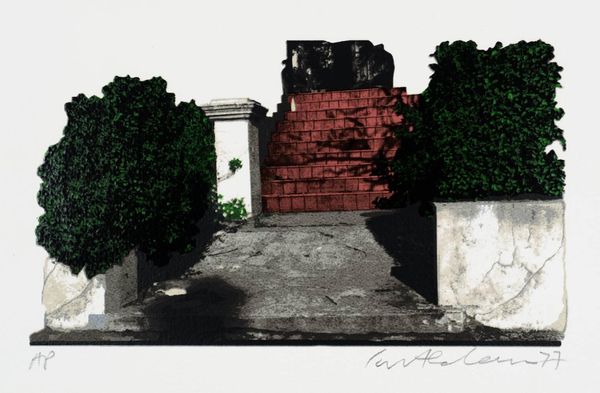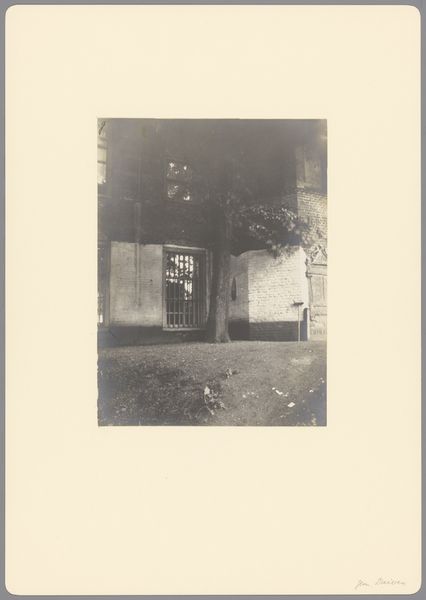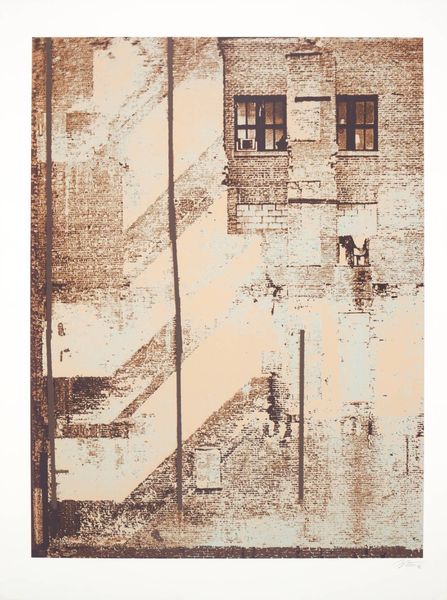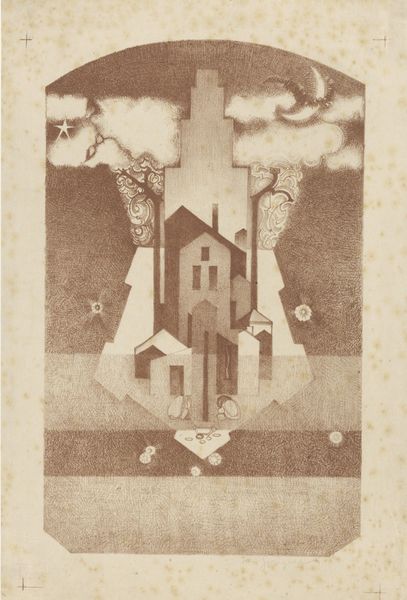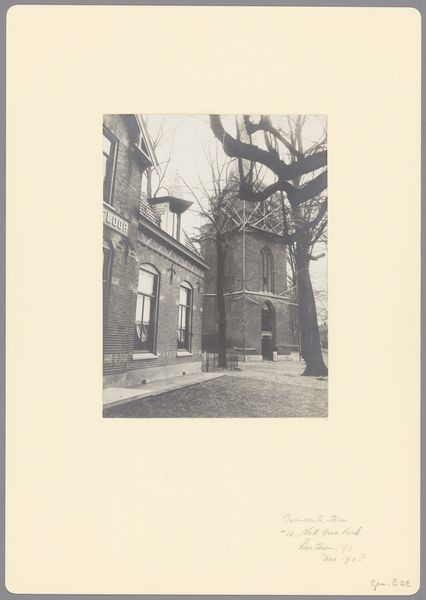
Dimensions: image: 775 x 546 mm
Copyright: © The Piper Estate | CC-BY-NC-ND 4.0 DEED, Photo: Tate
Curator: We are looking at “Dylwyn Church” by John Piper. It is currently part of the Tate Collections. Editor: It feels like a graveyard viewed through a distorted memory, all jagged edges and stark contrasts. Curator: Piper often explored the British landscape through a lens of Romanticism, combined with modernist techniques. He found inspiration in churches, but also in their place within a larger social structure. Editor: The acid green is such an unexpected splash. It feels like a defiant pulse of life amid all the somber stones. Curator: Exactly. The high contrast black and white intensifies the feeling of alienation. And, combined with the green, it subverts traditional representations of mourning. Editor: It’s as if he’s saying, "Even in death, there's something raw and vibrant pushing through.” Curator: Precisely, and understanding that interplay between the past and the present is key to Piper’s work. Editor: This piece lingers in the mind, almost like a half-forgotten dream.
Comments
Join the conversation
Join millions of artists and users on Artera today and experience the ultimate creative platform.
tate 6 months ago
⋮
Piper recorded his many visits to churches and chapels around the country with both sketches and photographs. In the 1960s and 1970s, he experimented with the use of these photographs as the basis for lithographs, adding drawn and collaged elements, often including his own handmade marbled papers, and using bright colours which contrast with the more sober black and white of the photographs. Here, rough textures have been added to the church wall in the background, and the grass of the graveyard has been coloured a bright green. Gallery label, May 2007
